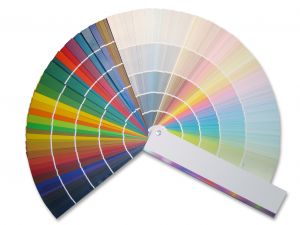

 Today, consumers can look at websites on a wide variety of devices from traditional desktop computers to smartphones and tablets. In fact, comScore estimates that by 2017, tablet shipments to consumers will surpass desktop shipments. Already, mobile advertising makes up 41% of Facebook’s revenue and 25% of YouTube’s revenue. You can follow the link to learn more statistics that support a mobile-first strategy.
Today, consumers can look at websites on a wide variety of devices from traditional desktop computers to smartphones and tablets. In fact, comScore estimates that by 2017, tablet shipments to consumers will surpass desktop shipments. Already, mobile advertising makes up 41% of Facebook’s revenue and 25% of YouTube’s revenue. You can follow the link to learn more statistics that support a mobile-first strategy.
The world has gone mobile and brand advertisers and brand publishers need to prioritize mobile in all aspects of their business strategy. Responsive design is gaining in popularity, not just among small businesses and web publishers who need an affordable and easy-to-manage way to go mobile, but to large brands and publishers, too.
David Taintor of Adweek reports that brands like CNN, Mashable, The Boston Globe, and several Hearst brands (Harper’s Bazaar, Town and Country, and Road and Track) have already moved to (or are about to move to) responsive web design. Taintor cites a research study by Undertone, a digital ad network, which found that 53% of publishers who responded to the survey plan to move to responsive design within the upcoming year.
It’s not surprising that responsive design is gaining traction among businesses, publishers, and brands of all sizes around the world. Rather than managing multiple versions of a website, creating and maintaining mobile apps, and so on, a single responsive website can do it all at a fraction of the cost and with significantly fewer resource hours.
For brand advertisers, Taintor notes that responsive design has shown better mobile advertising opportunities. He explains, “Inherently, responsive sites place mobile ads front and center, rather than relegating them to the sidelines.”
I asked responsive design expert Jody Resnick, CEO of Trighton Interactive, to provide his opinions about responsive design for large brand advertisers and publishers. Here is what he had to say:
With the proliferation of so many types of devices of varying screen sizes, responsive design solves a multitude of problems for large brands and publishers alike. First, it enables them to manage only one website that looks the same no matter what device someone is using and to work with only one set of analytics.
Secondly, and probably more important for big brands and publishers, is that responsive websites allow companies to have cross-screen analytics directly integrated into ads so they can determine the ideal size of ads as well as visitors’ geographic location, device, and type of use. More and more big brands and publishers like Time, USA Today, and Smashing Magazine are going responsive and using analytics to improve advertising on their websites and increase their advertising revenues.
Responsive also means responding to different user states based on the available data. Publishers must determine what state of mind the user is in to provide effective advertising. Are users accessing your site while standing in line somewhere? Are they home relaxing? Are they traveling? Location and activity play a big part in the relevancy of ads and how engaged a user will become. With data from responsive websites, understanding the user experience and responding to it is easier than with multiple, device-specific websites.
Responsive design represents a significant opportunity for both brand advertisers and brand publishers. Have you considered it for your brand yet? Leave a comment below and share your thoughts.
Image: Trighton.com
Lucy is Editor at Corporate Eye


